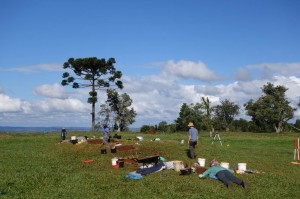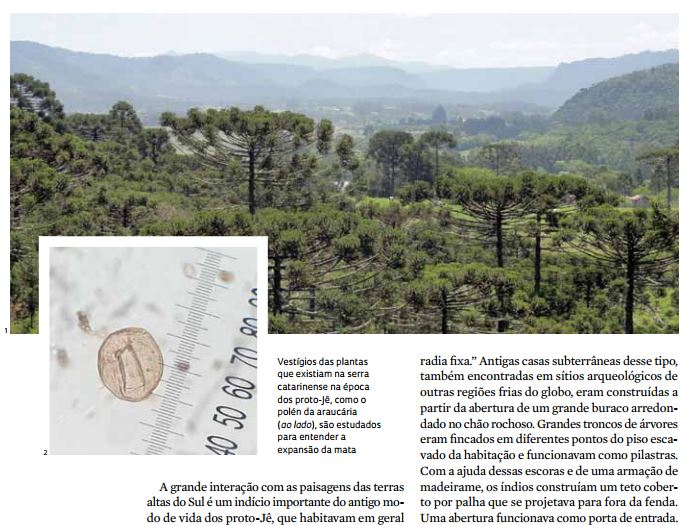2019 saw the release of five papers first-authored by TPRG members, three of them led by Heather and one each by Maca and me. In an ideal world each could be explored in its own dedicated blog post, as with this one on Maca’s paper, but as time is constantly getting away from me I’m afraid these brief summaries will have to do! You can find the full and updated list of TPRG publications here.
Category Archives: Publications
TPRG into 2020
I meant to write this post as a retrospective on 2019 at the end of last year, which gradually faded into a hope to publish it in early January. It’s now unavoidably the middle of February and the ‘new’ year is well underway, but so many TPRG things happened in 2019 that a review is still very much in order! Here’s a whistle-stop tour of some highlights…
Farewells and hellos
Both Heather and Richard completed their PhDs last year, so huge congratulations to Drs Plumpton and Smith! In 2019 Heather also spent several months in the Parliamentary Office of Science and Technology, thanks to a fellowship with the British Ecological Society, before starting work at the Walker Institute as an Interdisciplinary Research Fellow.
POST has always supported #WomenInScience. Many brilliant scientists join us every year through POST fellowships, and help us produce our flagship briefings: POSTnotes. 1/11 pic.twitter.com/xaimqUXxBK
— POST (UK Parliament) (@POST_UK) February 11, 2019
While it’s sad not to have Richard and Heather around any more, we’re very excited that Marco Raczka has joined the TPRG as a Postodoctoral Research Associate in Amazonian Palaeoecology (this post). He’ll be working on Frank’s new HERCA project over the next three years. Speaking of which… Continue reading
New research: modern pollen-vegetation relationships in Brazil’s Araucaria forests
A lot has happened since our last blog post in December! Heather and Richard successfully submitted their PhDs, James, Josie and I all had our PhD registration confirmed, and Frank has been awarded a significant grant from the AHRC (UK Arts and Humanities Research Council) and FAPESP (São Paulo research council, Brazil) for a major upcoming project. But while each of these things could probably have a post to their own, I wanted to give a bit of space here to look at a paper that Maca, Frank and I have recently had published.
Brazil’s Araucaria forests are iconic, diverse and ancient, but they’re also among the country’s most threatened ecosystems. 20th-Century logging reduced their area by up to 97% and, with their adaptation to relatively cool, constantly moist conditions, climate change is a looming threat. To understand how the forests will react it’s important to learn from their responses to past climate changes, but this is complicated because human activities may also have shaped the region’s vegetation dynamics in the 1,000 years or so.
Our study aimed to help disentangle these two drivers of change in the Araucaria forests by giving key insights into how the biome is represented by its key palaeoecological proxy, fossil pollen. We aimed to find out how well pollen rain could tell apart structurally different forest patches, and how over- or under-represented key trees were in their pollen. Although Araucaria forests’ modern pollen rain has been described before, this was the first time its relationship with the vegetation has been described in a quantitative way.
We found that, although structural differences between the forest plots were plain to see, they weren’t clearly reflected in the patches’ floristic composition. Pollen tends to have lower taxonomic resolution than vegetation surveys (it’s difficult – sometimes impossible – to tell the pollen of closely-related species apart), so it was therefore unsurprising that the plots couldn’t be distinguished by their pollen rain either. It’s possible that bigger or longer-standing structural differences would have been detectable, but this finding suggests that subtle human impacts in Araucaria forests may not be easy to pick up with fossil pollen.

This figure shows the differentiation of the forest plot types according to their vegetation (top row) and pollen (bottom row). Plot types are denoted by their colour and by their suffixes (op=open, cl=closed, di=disturbed, ro=rocky outcrop, sl=slope). The lack of coherent clusters in panels a and c, and the close spacing of the various plot groupings in b and d, show the patches’ similarity.
The difficulty of identifying complex changes in the forests is further emphasised by our second main finding. We calculated p/v values (a taxon’s pollen abundance divided by its abundance in the vegetation) for 27 tree genera. A p/v value of 1 would mean that a tree is equally present in both pollen and vegetation, a value of 2 would mean it’s twice as common in the pollen rain as in the landscape, a p/v of 0 means a plant’s growing nearby but isn’t found in the pollen sample, etc. Only five genera had p/v values higher than 1; by contrast, four had p/v values of 0, and 16 others had values less than 0.5. This means that pollen only provides good information on a small minority of the trees in this highly diverse forest – changes in the many under-represented taxa simply may not be captured. Logically, the over-represented taxa are the ones most often cited in palaeoecological studies, but these results suggest that analysing changes in rarer pollen types may also be important for understanding the ecosystem’s dynamics.

p/v values for 27 key Araucaria forest tree genera. Clethra technically has an infinite score (found in the pollen but not the vegetation survey); the paler sections for Lamanonia and Lithraea reflect different ways of calculating their values.
We hope this research helps find plot a path towards a fuller understanding of how past human and climate impacts on Araucaria forests are reflected in fossil pollen analyses. And, by putting numbers on the relationships between the forests’ trees and the pollen they produce, we hope to enable the increasingly accurate interpretation of these vital palaeoecological records.
Oli
Our study is published in Review of Palaeobotany and Palynology (https://doi.org/10.1016/j.revpalbo.2019.03.003). You can read and download it for free before the 22nd of May 2019 at this link: https://authors.elsevier.com/a/1YqF97uTvRX4z. After that date, please get in touch if you want to read the article but can’t access it online.
Macarena L. Cárdenas, Oliver J. Wilson, Lauri A. Schorn, Francis E. Mayle, José Iriarte (2019), A quantitative study of modern pollen–vegetation relationships in southern Brazil’s Araucaria forest. Review of Palaeobotany and Palynology 265, p.27-40, https://doi.org/10.1016/j.revpalbo.2019.03.003.
Anthropogenic Araucaria forests? New evidence published
A thousand years ago in southern Brazil, the unique Araucaria forest expanded rapidly over highland grasslands (campos), a change that’s largely been attributed to climate changes. At the same time, the southern proto-Jê people, whose diets and culture were interwoven with Araucaria trees, flourished. Given the close connections between the people and trees, and the timings of their expansions, might the Jê have been more important for that last forest expansion than the climate? So far, concrete evidence to address this question has been lacking – but two recent studies set out to provide just that.
New TPR paper: Impact of mid- to late Holocene precipitation changes on vegetation across lowland tropical South America: a paleo-data synthesis
By Richard Smith
Hello, and happy new year! In this blog post I’d like to briefly tell you about my first paper that was accepted and published in the journal Quaternary Research in late 2017. It’s entitled “Impact of mid- to late Holocene precipitation changes on vegetation across lowland tropical South America: a paleo-data synthesis” and can be found here.
In late 2016, Frank was approached by Mark Bush who wanted to prepare a collection of papers for a ‘special issue’ to honour the lives of two prominent palaeoecologists, Prof. Paul Colinvaux (1930-2016) and Prof. Daniel Livingstone (1927-2016). Both Paul and Daniel were leading figures in tropical palaeoecology, with Paul focusing predominantly on tropical South America and Daniel in tropical Africa. Throughout their careers, they were at the forefront of much of the breakthroughs in tropical palaeoecology, as well as inspiring and training many graduate students to create an international legacy of palaeoecologists. More can be read about their amazing careers in Mark Bush and Will Gosling’s tribute article: “In search of the ice age tropics, a tribute to Prof. Daniel Livingstone and Prof. Paul Colinvaux”.

(a) Dan Livingstone (photo courtesy of Duke University). (b) Paul Colinvaux at El Junco Crater Lake, Galapagos Islands (photo courtesy of Miriam Steinitz-Kannan). [From Bush & Gosling, 2018]
Given the focus as Paul and Daniel’s careers, the special issue was to focus on South American and Africa palaeoecology. Frank suggested that I take this opportunity to write a paper to submit to this special issue on some work I had completed previously, synthesising existing palaeoecological data from across tropical South America from the mid-Holocene to the present. So that is what I did! Continue reading
TPRG in PAGES Magazine
The latest edition of the Past Global Changes (PAGES) Magazine was published yesterday, on the theme of ‘Sustaining Earth’s Biodiversity’, and it features three contributions from the TPRG team.
The first, by Macarena and Northumbria University’s Bronwen Whitney, looks at how palaeoecology can shed light on the legacies of pre-Columbian people in Latin America’s modern ecosystems. It highlights Maca’s research on southern Brazil’s unique and ancient Araucaria forests (which has been part of the Jê Landscapes project, and which I’m continuing for my PhD), as well as Mayan breadnut palms in central America, and the chocolate forest islands and ice-cream bean cultivation of south-western Amazonia. It’s well worth a read, as are the research papers it discusses.
Heather also has two contributions in a mini-section reflecting on the PAGES Young Scientists’ Meeting 2017, an event she’s blogged about previously here (Palaeo-science in the Pyrenees). Her first article addresses the whys and (perhaps more importantly) hows of effective communication for palaeoscientists. Her second – equally important and closely linked – discusses the challenges of communicating the societal relevance of palaeo research, especially to funders and policymakers. Communicating research and its relevance is essential, and the insights and suggestions in these articles should be helpful starting points when considering it.
If you’ve got any questions or comments about the pieces, you can get in touch with Maca and Heather on twitter: @DrMacarenaLC and @HeatherPlumpton. The whole magazine edition can be read or downloaded here.
Oli
At FAPESP’s highlights: The Jê Project
The Jê group: Farmers and sedentary
This time, written by scientific journalist Marcos Pivetta, this article covers what has been discovered so far by the archaeological research within the project and gives a first glance of what has been found from the palaeoecological research performed by Macarena L. Cárdenas and Frank Mayle.
To read the whole article click here, available in Portuguese. Right hand click in the page to automatically translate in google.
Enjoy!
About FAPESP: São Paulo Research Foundation (FAPESP, Portuguese: Fundação de Amparo à Pesquisa do Estado de São Paulo) is a public foundation located in São Paulo, Brazil, with the aim of providing grants, funds and programs to support research, education and innovation of private and public institutions and companies in the state of São Paulo.






